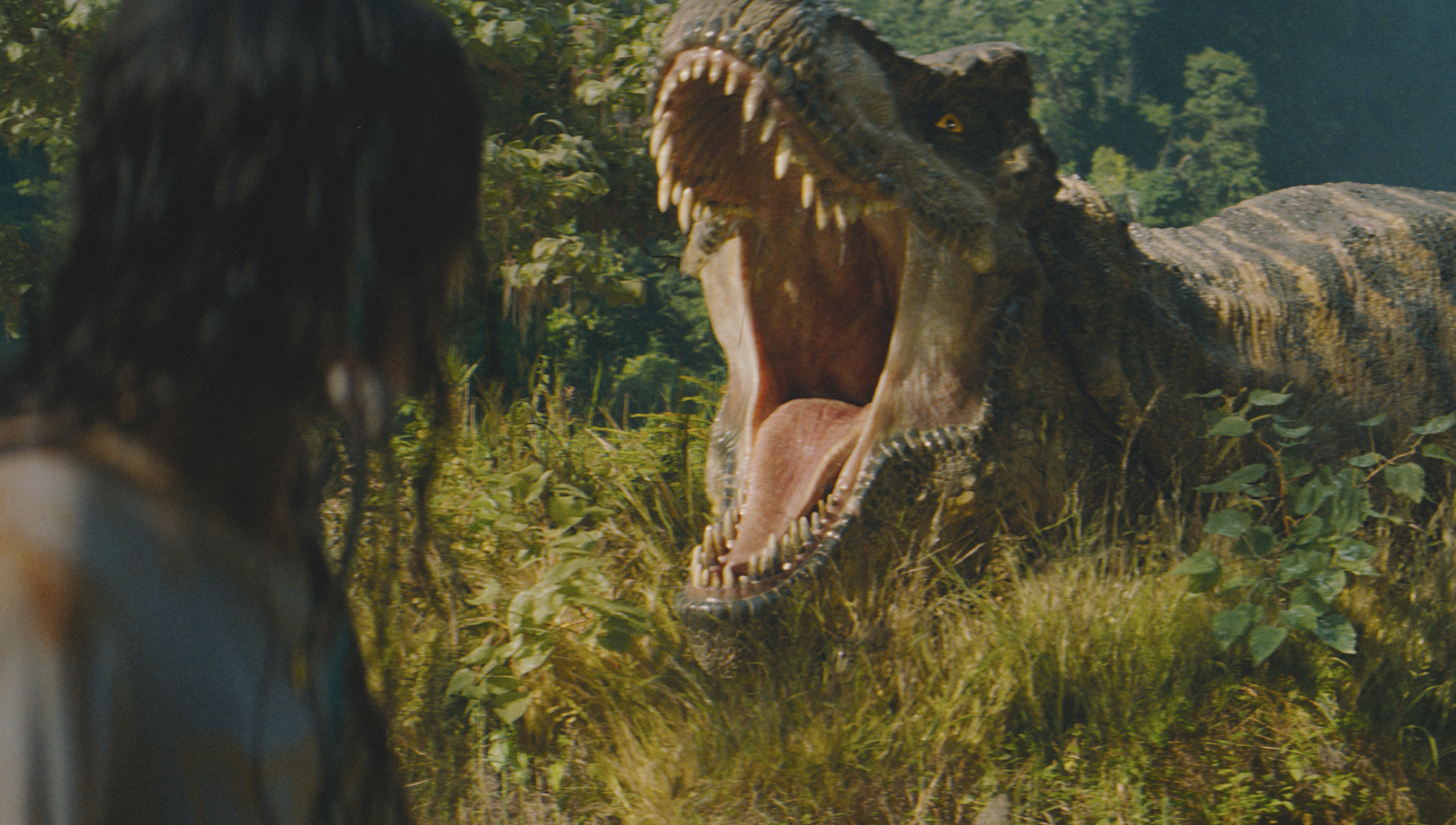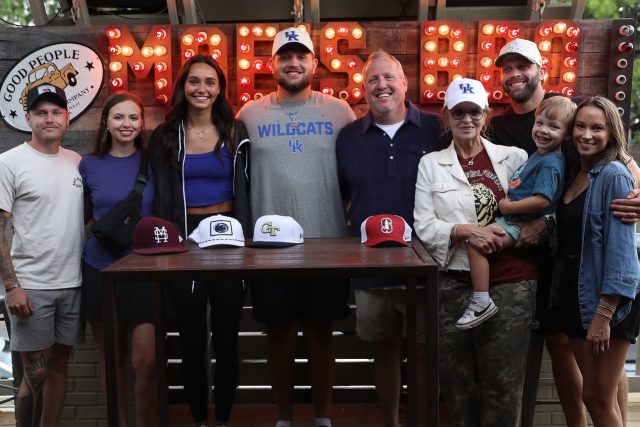Club Greyhound had many colorful characters, stories
Published 12:15 am Sunday, August 5, 2018

- Club Greyhound in Jeffersonville, Ind., is shown during the 1930s. Much of the club’s allure was its “sports book” that included horse racing.
Most Kentuckians know the history about our good ol’ boys and moonshine. For sure, eastern Kentucky has done a better job of getting tagged with distilling illegal liquor, but the truth is that western Kentucky has probably produced just as much.
There was, however, a so-called vice that Kentucky folks had a hand in making very successful, even though it was in another state.
Trending
Jeffersonville, Ind., which is just across the Ohio River from Louisville, at one time was referred to as “Little Reno,” and for good reason. Gambling and games of chance such as craps, blackjack, poker, bird cage and roulette have been going on for a long time in lots of places.
The first Jeffersonville gambling facility was built in 1926, and others soon followed. And because they were “officially” illegal, they were subject to occasional police raids. But the raids nearly always resulted from alleged violation of prohibition laws. Gambling equipment was rarely seized, and local police apparently made little effort to interfere with the gambling operation.
Most of the patrons came from the Louisville area, crossing the Ohio River, first on The Blue Line ferry operated by Yellow Cab Co., and then over the Clark Memorial Bridge when it was completed.
William “Weezer” Gavin, my wife Deborah’s grandfather, and two of his brothers were right in the middle of it all in 1932 when they opened what was Jeffersonville’s best-known casino, The Greyhound Club, on Eastern Boulevard. In its day, the location was prime. Sitting just behind the Jeffersonville Dog Mart near U.S. 131, where a track with 3,000 seats allowed patrons to watch greyhound dogs race, the Gavin brothers were right in the middle of the action.
The Jeffersonville track had been built by Joe Adams, a Kentucky-born, Florida-based operator. Dog tracks in the early days were referred to as “kennel clubs,” and there was a good chance the so-called mobsters had their fingers in this, too. The connection here to the mob was that Al Capone had struck up a relationship with a St. Louis lawyer named Edward J. O’Hare (the Chicago airport bears his name). It was O’Hare who had ended up with the patent rights of the mechanical rabbit that was the key to dog racing. For the right to install a mechanical rabbit, dog track owners paid a percentage of the gate. But the real money came in the “fixes.” It was easy: overfeed dogs or run their legs off before the actual race. O’Hare became the counsel and manager of dog tracks in Florida and thus the connection to the Jeffersonville track.
Although Capone was classified at the time as a “public enemy,” there were those who thought he was all right as long as his “mob stuff” didn’t affect them. Some thought he supplied a legitimate demand. At the Dog Mart in Jeffersonville, it was reported “that thousands stood and cheered Capone when he appeared with his bodyguards, waving his clasped hands above his head like a prizefighter entering the ring.”
Trending
Two years after it opened, The Greyhound Club was destroyed by fire. The Gavins were well aware of their easy access location near the bridge that could easily be seen by the heavy wartime traffic to and from the Indiana Ammunition Plant in nearby Charlestown. (It ran three eight-hour shifts). They quickly rebuilt and changed the name to Club Greyhound.
Local historians say the bridge was the first span to carry only highway traffic between southern Indiana and Kentucky on U.S. 31, becoming the main north-south corridor for the Midwestern part of the United States. In the beginning, it was a toll bridge, and reportedly the huge ebb and flow of gamblers from Louisville played an important role in paying down the bridge debt. So, too, did those who worked at Howard Steamboat (later Jeff Boat) and the Colgate Palmolive plant.
There were many colorful stories involving Club Greyhound. Few of the gambling establishments used “casino” in their name. The thinking was that “casino” was somewhat flaunting what went on inside, whereas “club” or “cafe” was more of a soft sell.
Club Greyhound was on par with some of the larger Las Vegas casinos of the time. A large circle driveway brought patrons to a covered portico at the entrance should there be any inclement weather. A fountain that jetted water into the air added a touch of class. The club was the first to have air conditioning in Jeffersonville. For sure, it did not project a “speak-easy” image.
Much of the club’s allure was its “sports book” that included horse racing. Western Union Wire Services was used to provide a facsimile of an actual horse race. The results came in over the wire, and the Greyhound had its own announcers who provided the call, much like that seen in the film “The Sting.”
Like Las Vegas, the Greyhound’s draw included gourmet dining and top-shelf entertainment for a reasonable price. Patrons could place a $2 bet and enjoy a $2 dinner. Limo service was available, and for big winners, security would accompany them home. Free bus tokens were there as well. Among the performers were Al Jolson, The Andrews Sisters and Helen Morgan, and patrons could dance to such bands as Guy Lombardo, Tommy Dorsey, Glenn Miller and Harry James. It was big time.
Jockey Eddie Arcaro lost $2,500 shooting craps the night before riding Lawrin to his first of four Kentucky Derby wins in 1938.
In 1939, movie star Clark Gable was said to have lost $68,000 in 27 minutes. One writer labeled his loss as “Gone With the Wind.”
By most accounts, my wife’s grandfather “Weezer” Gavin was riding high and, according to family records, there was one Derby Eve when the Greyhound cleared $1 million, which was real big money in the late 1930s.
“He had a large Jewish clientele that came from Louisville,” said Bill Gavin, my wife’s uncle. “I’ll never forget that he had hired Lawrence Welk to perform. Well, the Jewish customers complained that Welk spoke with a German accent and this was not good. Dad had to let Welk go. They thought he was German.”
“Weezer” Gavin left a legacy of making and losing a lot of money. He and his wife, Olivia, were known to help others throughout their lives, often to those who had gambled and lost in the Greyhound Club.
Get out, get up, and get going!
– Gary West’s column runs monthly in the Daily News. He can be reached by emailing west1488@twc.com.






